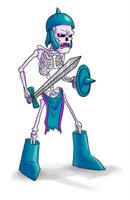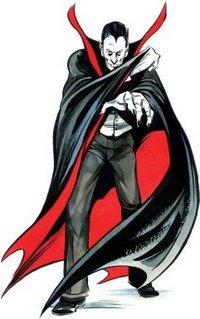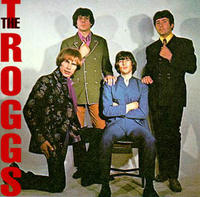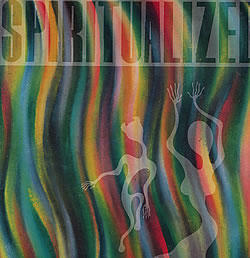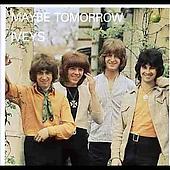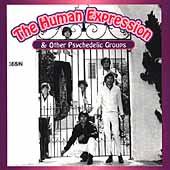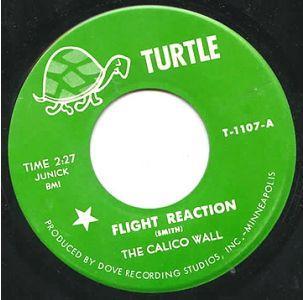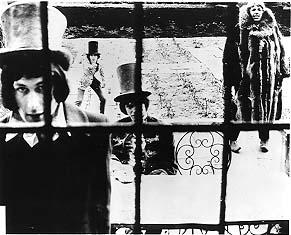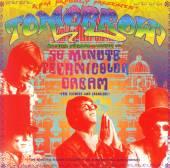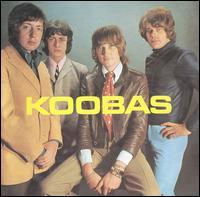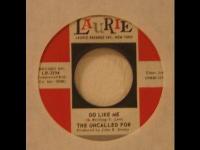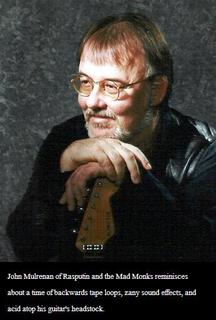
All I wanted to do was find some information about a song - "Hold On" by a North London band named Ipsissimus. The song is a fantastic proto-metal tune, with some great wah-wah guitar. It was released in 1969 by Parlophone Records and was produced by Norman Smith (the former Beatles engineer) and the legendary John Peel. I even found this photograph of the vinyl single, but no information about the band. After two hours of searching the internet for answers, I discovered two things - #1) the song was written by Rod Lynton, Gordon Haskell, and Howard Conder and #2) the British mid 60s psychedelic/garage scene was more incestuous than the Royal Family.
Numerous cigarettes and silent meditation was required to avoid my head from exploding while I tried to comprehend the twisted web which is the origins of the song "Hold On," and I am going to try my best to explain it to you. The first question you may have is "Who is Rod Lynton, Gordon Haskell, and Howard Conder?"
Let's start with Rod Lynton. Ron Lynton, whose original last name is Brosse, played guitar in the North London-based Extraverts, along with Steve Brendell. The Extraverts broke up, but Brendell and Lynton continued to make music, along with Ray Beverely, in Hard Edge. Hard Edge didn't last very long, and Sweet Feeling was birthed. Lynton handled the majority of songwriting duties for Sweet Feeling, earning the band management from the Robert Stigwood Agency. Their manager was (drum roll) Howard Conder.
Conder convinced Lynton to enter the studio with Chris (Tim) Andrews, who was the lead singer of Les Fleur De Lys to work on a new arrangement of the song "Charlie Brown," which would become "Reflections of Charlie Brown." Also playing at this session was organist Peter Solley, who later joined Procol Harum, which is ironic because "A Whiter Shade Of Pale" and "Reflections of Charlie Brown" were on the charts at the same time and oft-compared. Andrews brought the whole Les Fleur De Lys gang, including (drum roll) bassist Gordon Haskell, to the studio to cut "Reflections of Charlie Brown" and a new song (drum roll) "Hold On." This session was the conception of Rupert's People.
But it is not that simple. Les Fleur De Lys bailed, although they recorded a version of "Hold On" with Sharon Tandy singnig. This left Lynton and the rest of Sweet Feeling. Conder, being the businessman that he was, realized that Rupert's People had a single on the charts and a record deal, but there really wasn't a Rupert's People. So, Conder tried to put together a band to use the moniker. Sweet Feeling was approached but turned Conder down. Conder did convince Chris Andrews to leave his post as lead singer of Les Fleur De Lys to front Rupert's People. Andrews, Lynton, and Beverely were joined by Johnny Banks, Adrian Curtis, and Tony Dangerfield. Band had been a member of The Merseybeats, Curtis a member of The Knack, and Dangerfield was a member of Lord Sutch's Savages. Chris Andrews then left the group, to be replaced by Adrian's brother Paul Curtis, who was also a member of The Knack.
At this point Conder fired all of the band members, bringing in John Tout, David Jenkins, Steve Brendell. Brendell, if you remember from a few paragraphs ago, performed with Lynton in such bands as Extraverts, Hard Edge, Sweet Feeling, and the original line-up of Rupert's People. David Jenkins had spent much of the 1960s in bands with Pete Ham, most notably The Iveys (from 1964-67). The Iveys, if you remember, signed to The Beatles' Apple Records and released a handful of songs before being rechristened by Paul McCartney as Badfinger. John Tout would leave Rupert's People to replace John Hawken as Renaissance's keyboardist, but he would be reunited with Lynton and Brendell in 1971 where they were session player's for John Lennon's Imagine album.
Now, you may ask yourself, "What does this have to do with Ipsissimus?" Outside of it being the origins of the song they covered for their first single, ABSOLUTELY NOTHING. I still have no idea who was in Ipsissimus, if they preferred butter or jelly on their toast, or any of the other important aspects of the band. Despite not having much historical information about the band, check out the song. IT ROCKS!
This obnoxiously long, complex post wouldn't have been made possibly without help from
this site about the insanity which was the rotating lineup of Les Fleur De Lys, as well as
this article about Rupert's People. I swear there are points where these two articles (as well as many others on the internet) contradict each other, as well as points where there are holes in the story, but they are both super informative, whereas this post is probably just confusing and inaccurate.
Below you can check out the three version of "Hold On" - one from Rupert's People, one from Les Fleur De Lys feat. Sharon Tandy on vocals, and Ipsissimus' version. Were the songs worth the length of the post and which were the best - those are questions you can answer, I'm dont answering questions.
Rupert's People
"Hold On"
1967Les Fleur De Lys feat. Sharon Tandy
"Hold On"
1967Ipsissimus
"Hold On"
1969
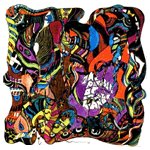 Alongside Thirteen Floor Elevators, Red Krayola were one of the most influential psychedelic acts coming out of Texas in the 1960s. Their debut album Parable of Arable Land, released in 1967, stands out as one of the most psychedelic albums ever released. From the trippy cover art to the avant garde "Free Form Freakouts" that appear between each song, Parable of Arable Land defines psychedelia.
Alongside Thirteen Floor Elevators, Red Krayola were one of the most influential psychedelic acts coming out of Texas in the 1960s. Their debut album Parable of Arable Land, released in 1967, stands out as one of the most psychedelic albums ever released. From the trippy cover art to the avant garde "Free Form Freakouts" that appear between each song, Parable of Arable Land defines psychedelia.





